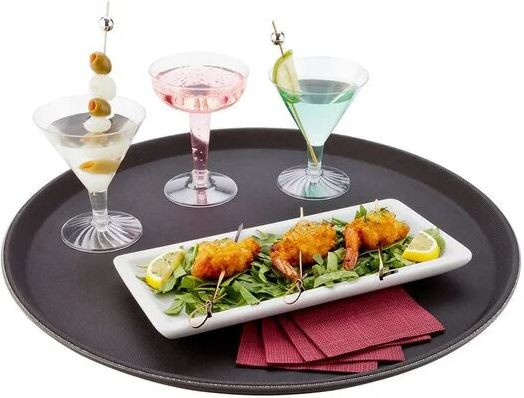“Eating,” in English, is simply the act of consuming food, but the world of food is so much more. If you are trying to translate “ăn” into English in the context of culinary arts, this article from balocco.net will equip you with the essential vocabulary and insights to understand and communicate about food like a pro. Let’s explore the delicious world of food, from cooking techniques to must-try dishes.
1. What is “Eating” Called in Culinary English?
The simple act of “ăn,” or eating, in English extends far beyond a single word. While “eat” is the most direct translation, culinary English offers a variety of terms to describe different aspects of enjoying food. According to a study by the Culinary Institute of America in July 2023, precise language enhances the dining experience. So, what are these terms?
- Dining: This implies a more formal and elaborate experience, often in a restaurant setting.
- Feasting: This suggests a large and celebratory meal.
- Grazing: This refers to eating small amounts of food over a period of time.
- Nourishing: Focuses on the health and nutritional aspect of eating.
- Consuming: A formal term for taking in food or drink.
Each term paints a slightly different picture, allowing for more nuanced communication about the act of eating.
2. How Do You Say “Culinary Arts” in English?
“Culinary Arts” is the direct translation of “Kỹ Thuật Chế Biến Món Ăn.” According to research from Johnson & Wales University, a leading culinary school, Culinary Arts encompasses the art, science, and business of food preparation. Culinary Arts programs cover a broad range of topics, including:
- Cooking techniques.
- Menu planning.
- Restaurant management.
- Food science.
- Nutrition.
2.1. What Is a “Culinary Engineer?”
While “Culinary Arts” is the standard term, “Culinary Engineering” is not as commonly used. According to Escoffier Online Culinary Academy in January 2024, it might imply a more technical and precise approach to cooking, focusing on the scientific principles behind food preparation.
3. How Do You Say “Intermediate Professional Cooking Techniques” in English?
“Intermediate Professional Cooking Techniques” accurately translates to “Kỹ Thuật Nấu Ăn Chuyên Nghiệp Trung Cấp.” This term describes a level of culinary skill that goes beyond basic cooking but hasn’t yet reached the advanced level.
3.1. What Skills Does “Intermediate Professional Cooking Techniques” Include?
- Advanced Knife Skills: Mastering different cuts and techniques for various ingredients.
- Sauce Making: Creating classic and contemporary sauces from scratch.
- Pastry and Baking: Producing a range of breads, pastries, and desserts.
- Meat and Seafood Cookery: Understanding different cooking methods for various proteins.
- Plating and Presentation: Arranging food in an appealing and artistic manner.
4. What Is a “Vocational School of Culinary Arts” in English?
A “Vocational School of Culinary Arts” is a school that specializes in training students for careers in the culinary field. According to data from the National Restaurant Association Educational Foundation in February 2024, these schools provide hands-on training and focus on practical skills.
4.1. What Benefits Does a “Vocational School of Culinary Arts” Offer?
- Hands-on Training: Students learn by doing, gaining practical experience in kitchens and restaurants.
- Industry Connections: Schools often have partnerships with local restaurants and hotels, providing students with internship and job opportunities.
- Career Focus: The curriculum is designed to prepare students for specific culinary careers, such as chefs, bakers, and caterers.
- Shorter Programs: Vocational programs are typically shorter than traditional culinary degree programs, allowing students to enter the workforce sooner.
5. Common Culinary Arts Vocabulary in English
To help you navigate the world of culinary English, here’s a compilation of essential vocabulary, categorized for easy reference.
5.1. Utensils and Equipment
| Term | Description |
|---|---|
| Napkin | Khăn ăn |
| Cabinet | Tủ đựng dụng cụ |
| Service station | Bàn/tủ phục vụ |
| Ice bucket | Xô đựng đá |
| Tray | Khay phục vụ |
| Cheese grater | Bàn bào phô mai |
| Spatula | Dụng cụ vét bột |
| Tongs | Kẹp gắp |
| Point of sale (POS) | Hệ thống tính tiền |
| Ladle | Vá |
| Tissue | Giấy ăn |
| Teacup | Tách trà |
| Teapot | Ấm trà |
| Paper cup | Cốc giấy |
| Show plate | Đĩa ăn chính |
| Bread plate | Đĩa bánh mì |
| Butter dish | Đĩa đựng bơ |
| Soup bowl | Chén ăn súp |
| Soup spoon | Muỗng ăn súp |
| Butter knife | Dao cắt bơ |
| Salad knife | Dao ăn salad |
| Fish knife | Dao ăn cá |
| Fish fork | Nĩa ăn cá |
| Salad fork | Nĩa ăn salad |
| Dessert fork | Nĩa ăn tráng miệng |
| Dessert spoon | Muỗng ăn tráng miệng |
| Teaspoon | Muỗng cà phê |
| Chopsticks | Đũa |
| Ice-cream scoop | Dụng cụ múc kem |
| Straw | Ống hút |
| Salt shaker | Lọ đựng muối |
| Pepper shaker | Lọ đựng tiêu |
| Service gear | Bộ muỗng nĩa để chia thức ăn |
| Coaster | Miếng lót ly |
| Snifter | Ly rượu cognac |
| Flute | Ly rượu sủi bọt (champagne) |
| Coupe | Ly rượu champagne (ít dùng) |
| Old fashioned glass | Ly rượu mạnh |
| Jigger | Ly đong rượu |
| Water goblet | Ly nước lọc |
| Tablecloth | Khăn trải bàn |


5.2. Names of Dishes
| Term | Description |
|---|---|
| Duo of starters | Hai món khai vị |
| Beijing style roasted duck and jellyfish salad | Gỏi sứa vịt quay Bắc Kinh |
| Australian beef tenderloin and Thai fresh herbs salad | Gỏi phi lê bò Úc rau mùi kiểu Thái |
| Coconut blade, prawns, pork with fresh herbs salad | Gỏi củ hủ dừa, tôm, thịt và rau mùi |
| Deep-fried prawns with salted egg yolk | Tôm sú rang trứng muối |
| Singapore style scampi with chilli sauce and deep-fried buns | Tôm càng sốt chilli kiểu Singapore và bánh bao chiên |
| Hong Kong style steamed Beluga sturgeon | Cá tầm Beluga hấp kiểu Hong Kong |
| Braised Australian abalone, white mushrooms and broccoli | Bào ngư Úc hầm nấm bạch linh và bông cải xanh |
| Deep-fried cobia with orange sauce | Cá bớp chiên giòn sốt cam |
| Sautéd spaghetti with seafood and tomato sauce | Mì spaghetti xào hải sản sốt cà chua |
| Fresh fruit and prawns spring roll with passion fruit sauce | Chả giò trái cây tôm sú sốt chanh dây |
| Stewed US beef with beans and tomato sauce served with bread | Bò Mỹ hầm đậu sốt cà dùng kèm bánh mì |
| Deep-fried Norwegian salmon with fresh fruits sauce | Phi lê cá hồi Na Uy chiên giòn sốt trái cây |
| Cobia and bamboo shoots hot pot served with fresh vermicelli | Lẩu cá bớp nấu măng chua và bún tươi |
| Bird’s nest and shredded chicken soup | Súp tổ yến gà xé |
| Chicken, scallops and enoki mushrooms soup | Súp thịt gà, sò điệp và nấm kim châm |
| Stir-fried udon noodles with seafood and vegetables | Mì udon Nhật xào hải sản rau củ |
| Honey-glazed barbecued pork | Xá xíu mật ong |
| Roasted pigeon | Bồ câu quay |
| Stewed fish fillets with bean curd in clay pot | Cá phi lê kho đậu hũ tay cầm |
| Crispy soft-shell crabs with chili and garlic | Cua lột chiên giòn rang tỏi ớt |
| Braised eggplant with minced pork and salted fish in clay pot | Cà tím hầm thịt heo bằm và cá mặn tay cầm |
| Sautéd beef cubes in black pepper sauce | Thịt bò xào tiêu đen |
| Baked seabass with miso sauce | Cá tuyết đút lò sốt miso |
| Crab and vermicelli in clay pot | Miến xào cua tay cầm |
| Baked lamb rib with red wine and black pepper | Sườn cừu đút lò với rượu vang đỏ và tiêu đen |
| Sautéd lotus root with wild mushroom and black fungus | Ngó sen xào nấm với mộc nhĩ |
| Pig’s stomach with marinated vegetable, ginkgo and ppper | Bao tử heo hầm cải mặn, bạch quả và tiêu |
| Spicy and sour soup in Sichuan style | Súp chua cay Tứ Xuyên |
| Baked stuffed sentinel crab shell with mozzarella cheese | Mai ghẹ phô mai đút lò |
| Spinach soup with prawns, squid and scallops | Súp hải sản bích ngọc |
| Double-boiled chicken soup with Australian abalone | Gà tiềm bào ngư Úc |
| Beijing style grilled pork ribs served with red sticky rice | Sườn non nướng kiểu Bắc Kinh Ăn kèm xôi gấc |
| Norwegian salmon hot pot served with fresh vermicelli | Lẩu cá hồi Na Uy dùng chung bún tươi |
| Chaozhou style steamed seabass | Cá chẽm hấp gia vị Triều Châu |
| Double-boiled duck with five fruits served with fresh noodles | Vịt hầm ngũ quả Ăn kèm mì tươi |
| Fried rice with prawns and salted duck eggs | Cơm chiên tôm và trứng muối |
| Sautéd king prawn with five spices and mayonnaise salad | Tôm càng rang ngũ vị và xà lách mayonnaise |
| Stir-fried blinweed with garlic | Rau muống xào tỏi |
| Hong Kong style steamed garoupa | Cá bống mú hấp kiểu Hong Kong |
| Grilled chicken with tabasco sauce served with red sticky rice | Gà sốt cay dùng với xôi gấc |
| Fresh fruit salad with scampi and cocktail sauce | Xà lách trái cây và tôm càng sốt cocktail |
| Seafood and green rice soup | Súp hải sản cốm xanh |
| Thai spicy and sour seafood salad | Gỏi hải sản chua cay kiểu Thái |
| Grilled Toulouse sausage with bacon | Xúc xích tươi vùng Toulous cuộn bacon nướng |
| Pumpkin soup with seafood | Súp bí đỏ hải sản |
| Steamed scampi with red ginseng and Hua Diao wine | Tôm càng hấp hồng sâm và rượu Hoa Điêu |
| Stewed Australian beef shank with country pâté served with bread | Bắp bò Úc hầm pa tê đồng quê Pháp dùng chung bánh mì |
| Thai seafood and mushroom hot pot served with fresh vermicelli | Lẩu nấm hải sản Thái Lan và bún tươi |
| Seafood and crab paste hot pot served with fresh vermicelli | Lẩu hải sản riêu cua và bún tươi |
| Double-boiled chicken with shark’s fin and snow fungus | Gà hầm vi cá và nấm tuyết nhĩ |
| Deep-fried seafood balls with cheese | Hải sản viên nhồi phô mai chiên giòn |
| Steamed prawn with vermicelli and minced garlic | Tôm hấp miến tỏi |
| Stewed US beef with Bourgogne Pinot Noir | Bò Mỹ hầm rượu vang Bourgogne Pinot Noir |
| Roasted US beef with “thien ly flower” salad | Gỏi thịt bò Mỹ đút lò và bông thiên lý |
| Braised abalone with black mushrooms, choy sum and oyster sauce | Bào ngư hầm nấm đông cô và cải ngồng sốt dầu hào |
| Roasted half suckling pig and steamed buns | Heo sữa quay ½ con và bánh bao hấp |
| Fried tofu with lemongrass and chili | Đậu hũ chiên sả ớt |
| Deep-fried soft-shell crab with salt and pepper | Cua lột chiên giòn muối tiêu |
| Braised shark’s fin with crab roe | Súp vi cá gạch cua |
| Sautéd and deep-fried whole garoupa | Cá mú trân châu nguyên con |
| Yang Zhou fried rice | Cơm chiên Dương Châu |
| Double-boiled whole melon soup with assorted seafood | Canh trái bí tiềm hải vị |
| Crab steamed with glutinous rice in lotus leaf | Xôi lá sen hấp cua thịt |
| Stewed noodles with shrimp dumpling, ginger and scallion | Mì hầm sủi cảo hành gừng |
| Spring rolls | Chả giò |
| Vietnamese summer rolls | Gỏi cuốn |
5.3. Names of Vietnamese Dishes
| Term | Description |
|---|---|
| Spring roll | Chả giò |
| Baked Honey Comb Cake | Bánh bò nướng |
| Vietnamese shaking beef | Bò lúc lắc |
| Cassava and Coconut Cake | Bánh khoai mì |
| Mini shrimp pancakes | Bánh khọt |
| Sticky Rice | Xôi |
| Beef Stew with Baguette | Bánh mì bò kho |
| Sticky rice xôi | Xôi |
| Coconut milk-flavored pancakes | Bánh xèo |
| Sizzling Crepes | Bánh xèo |
| Broken rice | Cơm tấm |
| Steamed rice roll | Bánh cuốn |
| Green pepper cooked beef | Bò nấu tiêu xanh |
| Steam pork bun | Bánh bao |
| Curry with Baguette | Bánh mì thịt |
| Vietnamese baguette Sandwich | Bánh mì |
| Deep fried banana | Bánh chuối chiên |
| Tet Sticky Rice Cakes | Bánh chưng |
| Fish cake soup | Bánh canh chả cá |
| Fried rice cake | Bột chiên |
| Vietnamese noodle soup | Phở |
5.4. Dessert Names in English
| Term | Description |
|---|---|
| Mango pudding | Bánh pudding xoài |
| Orange sesame ball | Bánh cam |
| Vietnamese coconut pandan waffles | Bánh kẹp lá dứa |
| Jackfruit sago dessert | Chè mít Mã Lai |
| Cheesecake | Bánh phô mai |
| Apple crumble | Bánh táo vụn |
| Lemon tart | Bánh tart chanh |
| French toast | Bánh mì nướng kiểu Pháp |
| Chilled tofu with longan in sugar syrup | Chè tàu hũ long nhãn |
| Chilled lotus seeds, red dates and snow fungus in syrup | Chè hạt sen táo đỏ tuyết nhĩ |
| Peach gum and mixed fruit sweetener | Chè nhựa đào dưỡng nhan |
| Bird’s nest and lotus seeds sweetener | Chè hạt sen tổ yến |
| Glutinous rice balls with black sesame | Bánh trôi vừng đen |
| Double-boiled superior bird’s nest with rock sugar | Yến tiềm đường phèn thượng hạng |
| Double-boiled superior bird’s nest in almond cream | Yến tiềm hạnh nhân thượng hạng |
5.5. Types of Fruit
| Term | Description |
|---|---|
| Pineapple | Thơm |
| Papaya | Đu đủ |
| Apricot | Mơ |
| Pear | Lê |
| Guava | Ổi |
| Star apple | Vú sữa |
| Rambutan | Chôm chôm |
| Avocado | Bơ |
| Sapodilla | Hồng xiêm |
| Jackfruit | Mít |
| Mango | Xoài |
| Tamarind | Me |
| Watermelon | Dưa hấu |
| Mangosteen | Măng cụt |
| Kumquat | Tắc |
| Pomegranate | Lựu |
5.6. Types of Drinks
| Term | Description |
|---|---|
| Green tea | Trà xanh |
| Black tea | Trà đen |
| Fruit tea | Trà hoa quả |
| Herbal tea | Trà thảo mộc |
| Iced tea | Trà đá |
| Pineapple juice | Nước ép thơm |
| Spirit | Rượu mạnh |
| Smoothie | Sinh tố |
| Milk | Sữa |
| Milkshake | Sữa lắc |
| Lemonade | Nước chanh |
| Mineral water | Nước khoáng |
| Coffee | Cà phê |
5.7. Cooking Methods
| Term | Description |
|---|---|
| Bake | Nướng |
| Blanch | Chần sơ |
| Boil | Đun sôi |
| Mince | Bằm |
| Roast | Quay |
| Steam | Hấp |
| Stew | Hầm |
| Marinate | Ướp |
| Stuff | Nhồi |
| Chop | Xắt miếng |
| Soak | Ngâm |
| Dice | Cắt hạt lựu |
| Fry | Chiên |
| Stir fry | Xào |
| Deep fry | Chiên ngập dầu |
5.8. Translating Restaurant Menu Items: A Formula
To translate Vietnamese dishes into English for a restaurant menu, you can use these formulas:
- Main Ingredient + Cooking Technique (with -ed ending) + With/In + Other Ingredients
- Example: Crab steamed with glutinous rice in lotus leaf: Xôi lá sen hấp cua
- Cooking Technique (with -ed ending) + Main Ingredient + With/And + Other Ingredients
- Example: Stir-fried blinweed with garlic: Rau muống xào tỏi
6. Culinary Trends in the USA
Staying up-to-date with culinary trends in the USA can inspire your cooking and inform your culinary vocabulary. According to data from the Specialty Food Association published in March 2024, here are a few key trends:
| Trend | Description |
|---|---|
| Plant-Based Foods | Increasing demand for vegan and vegetarian options, including meat substitutes and innovative uses of vegetables. |
| Global Flavors | Exploration of international cuisines, with a focus on authentic ingredients and cooking techniques. |
| Sustainable Seafood | Emphasis on sourcing seafood from sustainable fisheries and promoting responsible fishing practices. |
| Fermented Foods | Growing interest in fermented foods like kimchi, kombucha, and sauerkraut for their health benefits and unique flavors. |
| Functional Foods | Foods that offer health benefits beyond basic nutrition, such as those rich in antioxidants, probiotics, or omega-3 fatty acids. |
7. Essential Culinary Skills to Master
Building a strong foundation in culinary skills is crucial for any aspiring cook or chef. According to Auguste Escoffier School of Culinary Arts, mastering the following skills will significantly enhance your culinary abilities:
- Knife Skills: Proper knife handling and cutting techniques are essential for efficient and precise food preparation.
- Sauce Making: The ability to create flavorful and well-balanced sauces is a hallmark of a skilled chef.
- Stock Making: Knowing how to make high-quality stocks from scratch is the foundation for many soups, sauces, and braises.
- Baking and Pastry: Understanding the principles of baking and pastry allows you to create a wide range of breads, cakes, and desserts.
- Meat Cookery: Mastering different cooking methods for various cuts of meat ensures optimal flavor and texture.
- Seafood Cookery: Knowing how to properly handle and cook seafood is essential for creating delicious and safe dishes.
- Vegetable Cookery: The ability to cook vegetables properly, preserving their nutrients and enhancing their flavor, is crucial for creating healthy and balanced meals.
- Plating and Presentation: Presenting food in an appealing and artistic manner enhances the dining experience and showcases your culinary skills.
8. Where to Find Culinary Inspiration and Recipes
Looking for delicious recipes and culinary inspiration? Here are some popular resources in the USA:
- Food Blogs: Many food blogs offer a wide range of recipes, cooking tips, and personal stories. Some popular ones include “Smitten Kitchen,” “Serious Eats,” and “Simply Recipes.”
- Cookbooks: Cookbooks are a great way to learn new techniques and explore different cuisines. Look for cookbooks by renowned chefs or those focused on specific culinary topics.
- Cooking Shows: Cooking shows can be a fun and educational way to learn about food and cooking. Popular shows include “MasterChef,” “The Great British Baking Show,” and “Chopped.”
- Online Culinary Courses: Online culinary courses offer a structured learning experience and allow you to learn at your own pace. Platforms like “Coursera” and “edX” offer courses from top culinary schools.
- balocco.net: Offers a diverse collection of recipes, categorized by cuisine, ingredient, and dietary needs, along with detailed articles on cooking techniques and restaurant recommendations. Plus, a community where food lovers share experiences and tips.
9. Connecting with the Culinary Community in Chicago
Chicago boasts a vibrant culinary scene with numerous opportunities to connect with other food enthusiasts:
- Attend Food Festivals: Chicago hosts many food festivals throughout the year, showcasing local chefs, restaurants, and culinary creations.
- Join a Cooking Class: Many cooking schools and community centers offer cooking classes for all skill levels.
- Visit Farmers Markets: Farmers markets are a great place to meet local farmers and food producers and discover fresh, seasonal ingredients.
- Join a Food-Related Meetup Group: Online meetup groups connect people with shared interests in food and cooking.
- Explore Ethnic Neighborhoods: Chicago’s diverse ethnic neighborhoods offer a wealth of culinary experiences, from authentic restaurants to specialty food stores.
To experience Chicago’s food scene, visit these locations: Address: 175 W Jackson Blvd, Chicago, IL 60604, United States. Phone: +1 (312) 563-8200. Or visit balocco.net.
10. Frequently Asked Questions (FAQ) about Culinary English
10.1. What is the difference between “cook” and “chef?”
A cook is someone who prepares food, while a chef is a trained professional who manages a kitchen and creates menus.
10.2. What is “mise en place?”
“Mise en place” is a French term that means “everything in its place.” It refers to the practice of preparing all ingredients and equipment before starting to cook.
10.3. What is the Maillard reaction?
The Maillard reaction is a chemical reaction between amino acids and reducing sugars that gives browned food its distinctive flavor.
10.4. What is the difference between “baking” and “roasting?”
Baking is cooking food in an oven with dry heat, typically for breads, cakes, and pastries. Roasting is cooking food in an oven with dry heat, typically for meats and vegetables.
10.5. What is “al dente?”
“Al dente” is an Italian term that means “to the tooth.” It refers to pasta that is cooked until it is firm to the bite.
10.6. What is a “gastrique?”
A gastrique is a French sauce made by caramelizing sugar and then deglazing it with vinegar.
10.7. What is “sous vide?”
“Sous vide” is a cooking technique in which food is sealed in a bag and cooked in a water bath at a precise temperature.
10.8. What is “umami?”
“Umami” is one of the five basic tastes, along with sweet, sour, salty, and bitter. It is often described as a savory or meaty taste.
10.9. What is “confit?”
“Confit” is a cooking technique in which food is cooked in its own fat, typically at a low temperature.
10.10. What are the key differences between French and Italian cuisine?
French cuisine often emphasizes rich sauces and elaborate techniques, while Italian cuisine often focuses on fresh, simple ingredients and regional specialties.
Ready to elevate your culinary journey? Discover a world of delicious recipes, cooking tips, and a vibrant community of food lovers at balocco.net. Whether you’re seeking inspiration for your next meal or looking to expand your culinary knowledge, balocco.net is your ultimate destination.



